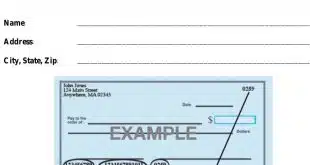Apple Inc. chief executive Tim Cook said Tuesday afternoon that Apple’s new Apple Pay mobile-payment service is doing well three months after its launch, but he gave few details during the company’s latest quarterly earnings call.
“Apple Pay is off to a very strong start,” Cook said in his opening remarking to analysts after the computer maker and iTunes developer released its financial report for the first quarter of fiscal 2015 ended Dec. 27. Apple posted record net income of $18 billion, the biggest quarterly profit ever by a public corporation, according to Reuters, on revenues of $74.6 billion, up 30% from $57.6 billion a year earlier.
Cook said that about 750 banks and credit unions have signed up to offer Apple Pay to their customers, and the service now accounts for two of three dollars charged via contactless payments on the nation’s three largest payment card networks.
Apple Pay works with Apple’s new iPhone 6 and 6 Plus smart phones and also on the pending Apple Watch, a wearable set for release in April. The service uses near-field communication (NFC) contactless technology as well as tokenization and Apple’s Touch ID fingerprint biometrics technology for customer authentication.
Cook was vague when an analyst asked what the company had in store for the service, which currently is available only in the U.S. and does not directly link to merchants’ loyalty programs. “I think we’re still in the first inning on it, we haven’t even completed the first inning yet,” Cook said. “There’s tons of things on our roadmap of adding functionality to it.” He added that “there’s tons of countries” where Apple Pay could be launched, but he didn’t name any.
“We’re just on the front end,” he said. “I think this is the year of Apple Pay.”
Prominent Apple Pay acceptors include Panera Bread and Whole Foods. On Tuesday, vending machine and unattended-payments services provider USA Technologies Inc. said it would roll out Apple Pay to 200,000 self-service locations.
Cupertino, Calif.-based Apple did give more information about its core product, the iPhone. Boosted by the much-hyped, large-screen iPhone 6 and 6 Plus, Apple reported selling 74.5 million iPhones worldwide in the the quarter, up 46% from 51 million a year earlier, generating $51.2 billion in revenue. Those numbers exceeded Apple’s own expectations and as well as most analysts’ estimates, most of which were in the mid- to high 60 million range.
For payments executives and bankers, more iPhone 6 models in the market mean more potential Apple Pay users even though Apple’s iOS mobile operating system is No. 2 in the U.S. market after Google Inc.’s Android. “These numbers are important,” says Zilvinas Bareisis, a senior analyst who covers payments for research firm Celent, a unit of Oliver Wyman. “It clearly can only have a positive effect.”
Owners of iPhones accounted for 42.3% of U.S. smart-phone users in 2014, up from 40% in 2013, while Android users comprised 51.3% of the market versus 50.5% in 2013, according to New York City-based eMarketer Inc. Cook claimed high iPhone sales could be sustained, saying that only a low-teens percentage of the existing iPhone user base has upgraded to the 6 models, and that many of the new buyers are new to the iPhone or are former Android users.
Some 76% of respondents picked Apple Pay in a Jan. 23 Digital Transactions News survey that asked readers which of four major currently available or pending mobile-payment services stands the best chance of challenging market leader PayPal Inc. for the digital wallet with the most consumer and merchant adoption. The survey is still ongoing; readers can vote by clicking here. Final results will be reported Friday, Jan. 30, in the Digital Transactions News email newsletter.




